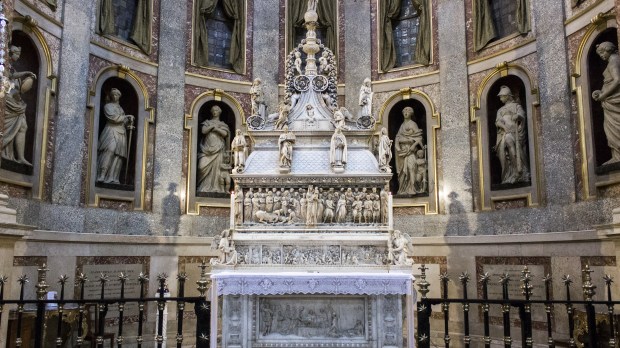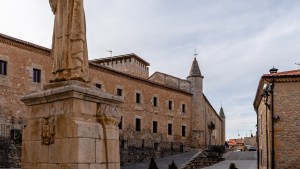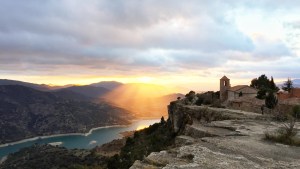The Ark of St. Dominic, in the Basilica of San Domenico in Bologna (Italy), is a funerary monument containing the remains of Santo Domingo De Guzmán, founder of the Order of Preachers. It took around 500 years to finish St. Dominic’s tomb, and some of the best sculptors in the history of Italian art worked on it, from Nicola Pisano to Michelangelo.
Born in Caleruega (a relatively small town one hour south of Burgos) in the late 12th century, St. Dominic died in Bologna in the year 1221, in the then convent of the church of San Nicolò delle Vigne. Soon the church was expanded and named after the Spanish saint, becoming the Basilica of San Domenico.
St. Dominic was first buried behind the altar of the church. His remains were moved a decade later and deposited in a sober marble sarcophagus on the floor of the church. It soon became a popular place of pilgrimage. But most of the pilgrims were not able reach St. Dominic’s tomb: it was hidden almost all the timeby large numbers of people who were standing in front of it, praying day and night. A bigger monument, one that could be seen from afar, was necessary.
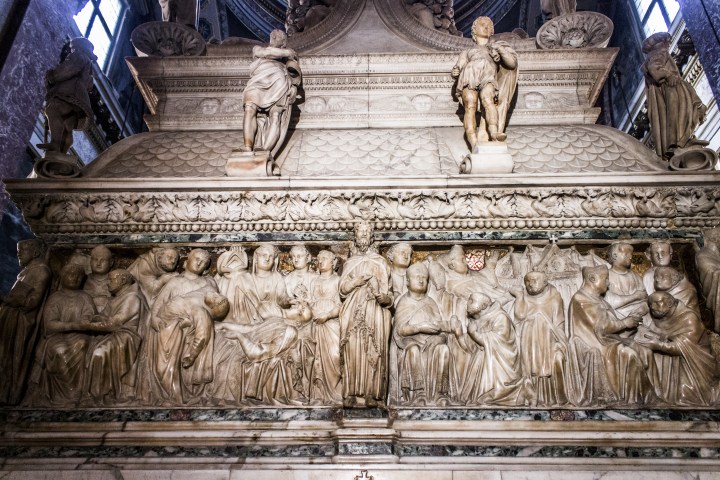
The Dominicans hired the famous sculptor Nicola Pisano. Pisano is considered the last Gothic sculptor and a Renaissance pioneer. He designed the new tomb and carved several figures in the frontal side of the sarcophagus. But he soon had to leave Bologna, as he was called to Siena to build the pulpit for the cathedral, as he was already famous for his work in Pisa’s Baptistery. One of his assistants, Lapo Di Ricevuto, completed the first part of the monument around the year 1265.
The tomb was relocated to the middle of the church in 1411. A group of sculptors led by Niccolò Da Bari added a crowning to the flat top of the sarcophagus. This work earned Da Bari so much renown that he is nowadays known as Niccolò Dell’Arca, in a straightforward reference to St. Dominic’s Ark. Among the sculptors led by Dell’Arca was a young Michelangelo, who added the images of San Petronio and San Procolo to the monument.
The chapel was rebuilt in in 1597 by the noted architect Floriano Ambrosini, as the friars saw the need to have a better chapel to house the remains of their founder and receive the numerous pilgrims that walked the Dominican Camino to get there. The fresco on the cupola of the apse of this new chapel, the Glory of St. Dominic, is the work of the classicist maestro Guido Reni.
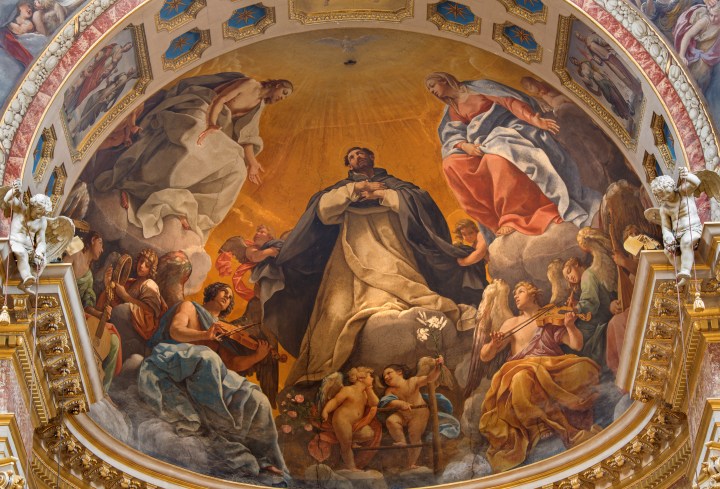
Nowadays, the Basilica is still the last stop of the Dominican Camino, which begins in the saint’s hometown, Caleruega, in northern Spain.
